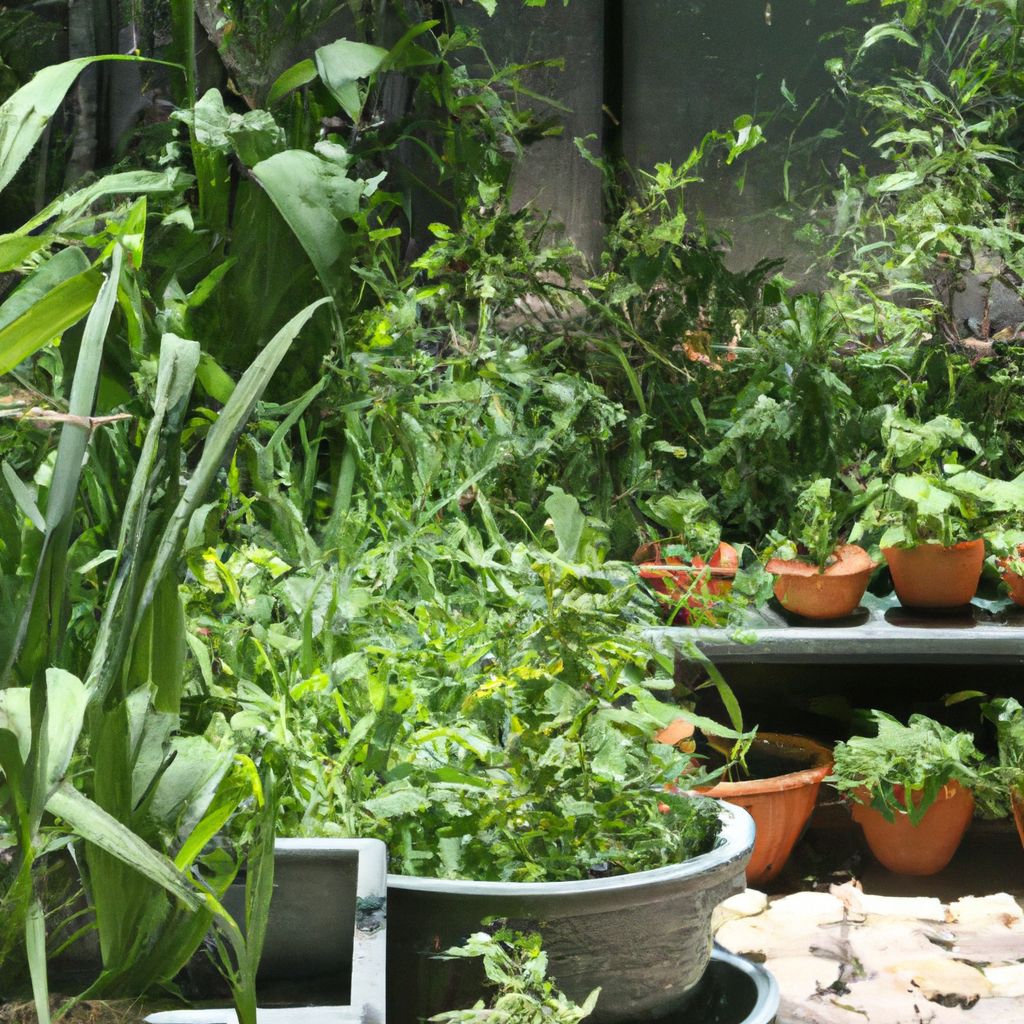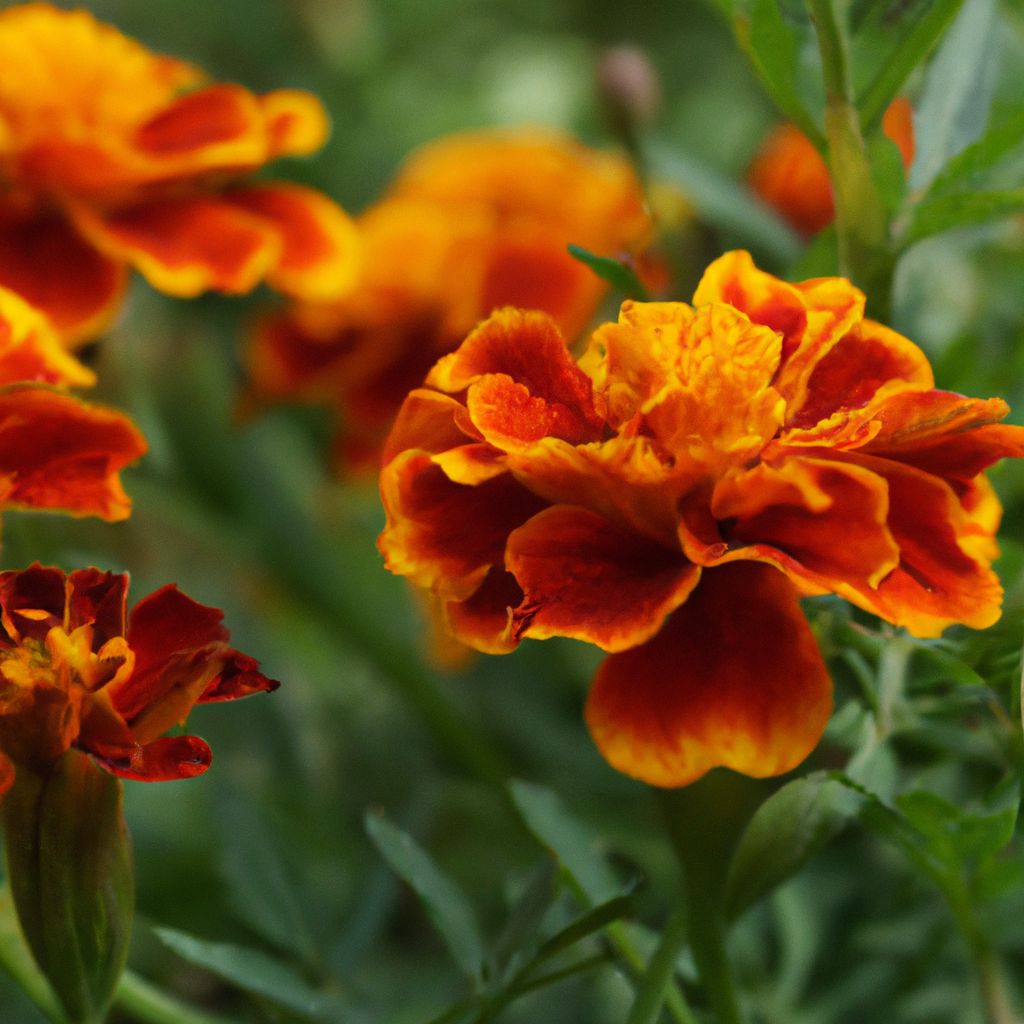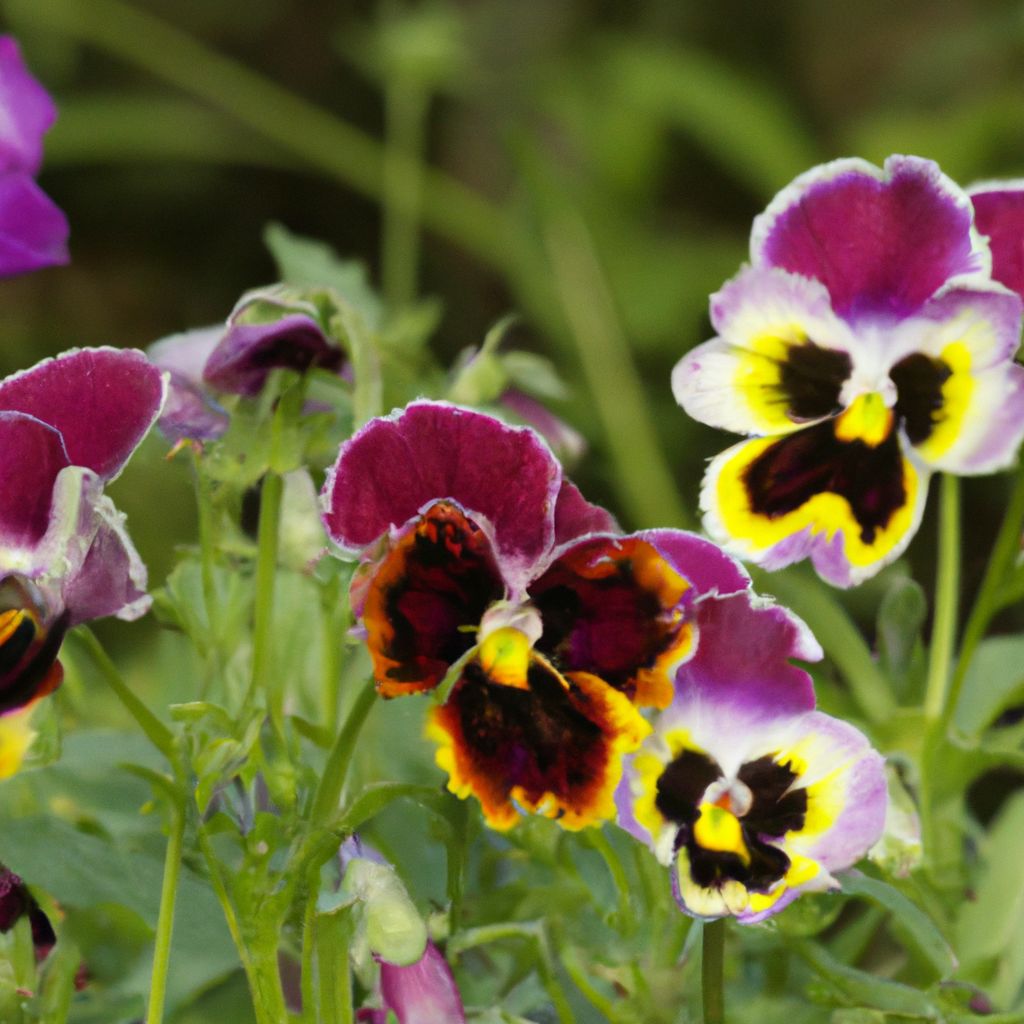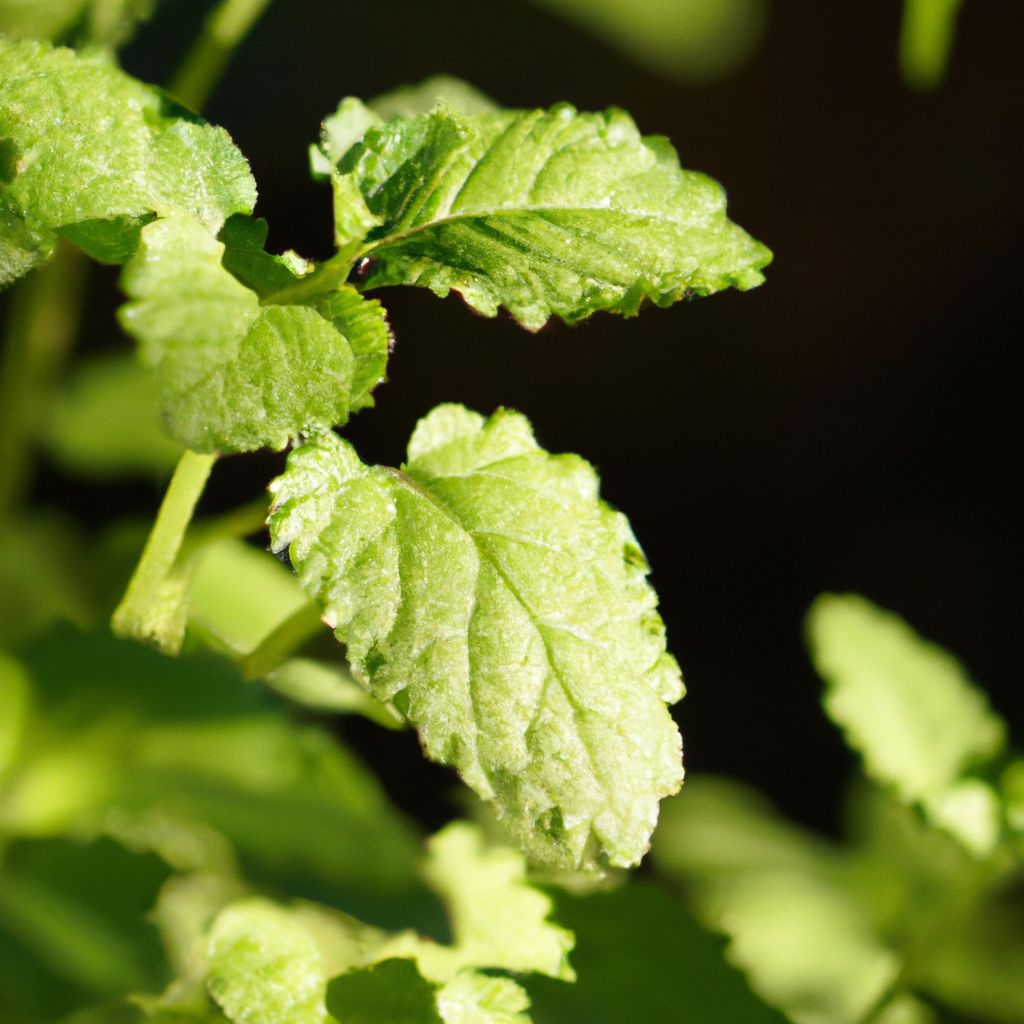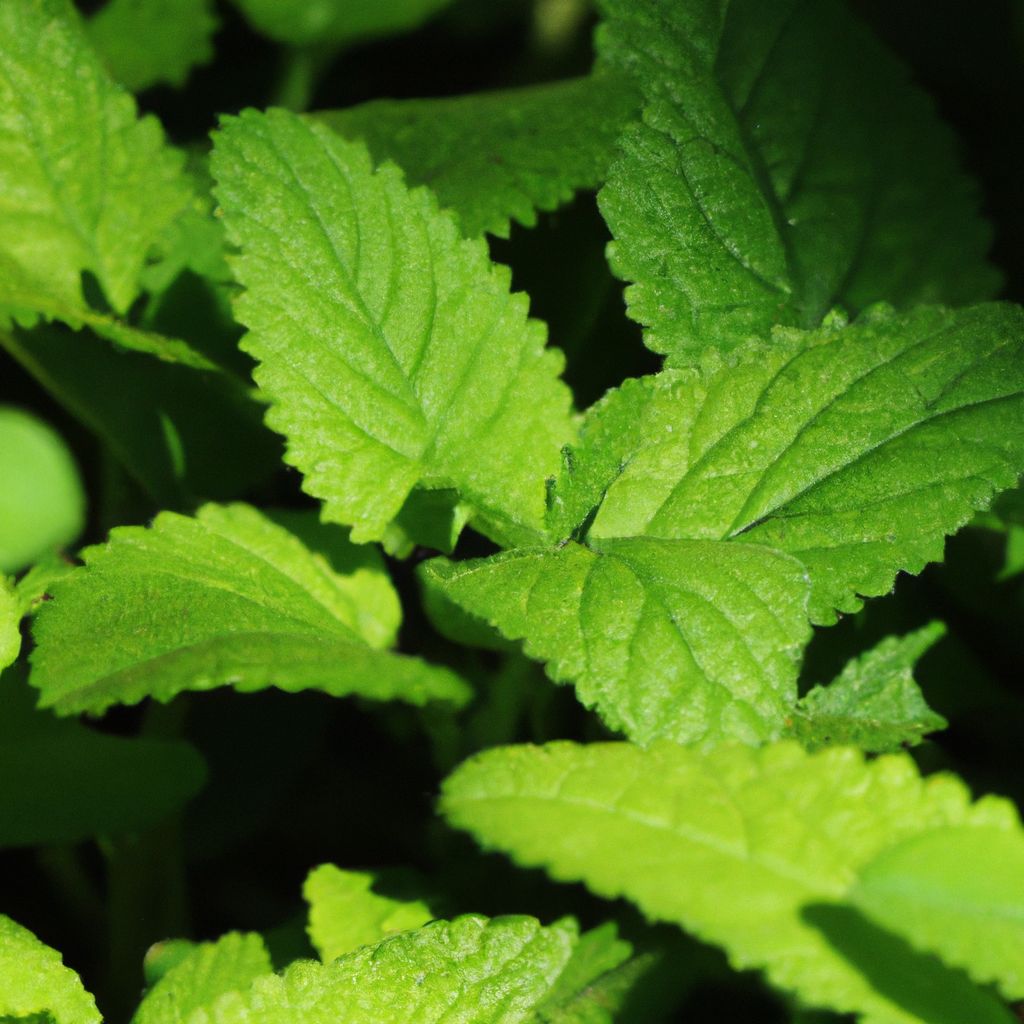Looking to extend your gardening season? A cold frame allows you to grow plants in winter’s cold temperatures. This simple box structure transforms into a miniature greenhouse, harnessing the sun’s warmth while protecting plants from frost and wind. Read on to learn everything you need to know about how to start a cold frame garden.
What is a Cold Frame Garden?
A cold frame is an enclosed box structure made of wood, plastic, or glass that sits directly on the garden soil. The transparent or translucent top acts as a window, allowing sunlight to enter and heat up the interior. This creates a warmer microclimate suitable for growing plants during cold weather. The insulated sides retain heat while blocking chilling winds.
Positioned in a sunny location, a cold frame can keep the soil temperature up to 20°F warmer than the outside air. This gives you an extended growing season, with plants thriving weeks or months beyond their normal outdoor range. You can grow cold hardy vegetables, herbs, and flowers in your cold frame through winter.
Unlike a greenhouse, cold frames are not designed for year-round use. They are intended to extend the seasons at each end of the growing period, getting plants started earlier in spring and allowing you to harvest later into fall and early winter. The enclosed environment gives tender crops the protection they need to withstand cold snaps and light freezes.
With minimal investment, a cold frame provides small-scale gardeners the ability to continue gardening beyond the normal frost-free period. It serves as a tool to start seedlings early, harden off transplants, and grow a variety of hardy plants in shelter through the colder months when most other plants have died back for winter dormancy.
Benefits of Cold Frame Gardening
Starting a cold frame garden offers many advantages for home gardeners:
Prolongs Harvest
Extends the growing period, allowing you to harvest fresh produce like salad greens, root crops, and herbs weeks or months longer.
Earlier Planting
Provides an enclosed space to start seeds or harden off transplants earlier in spring before transferring to the open garden after the last frost.
Frost Protection
Shields delicate seedlings and transplants from late spring and early fall frosts that would damage them in the open garden.
Overwintering Plants
Allows you to grow flowers, herbs, cool weather vegetables, and other plants that wouldn’t survive winter outdoors in your climate.
Saves Money
Reduces grocery bills by supplementing store-bought produce with homegrown food.
Increases Productivity
Boosts your overall garden productivity without taking up additional outdoor space.
Off-Season Gardening
Satisfies the gardening itch by allowing you to grow plants during the winter downtime when most gardening stops.
Learning Opportunity
Provides experience and skills that carry over into the main growing season, making you a better gardener.
With minimal financial investment and some basic DIY skills, a backyard cold frame can pay for itself quickly by extending the harvest season and overwintering plants that would otherwise perish.
How to Build a Cold Frame
Constructing a basic cold frame is an easy and affordable DIY project for most home gardeners. Here are some tips on how to build one:
Choose a Sunny, Sheltered Location
- Select a site that receives at least 6 hours of direct sunlight daily, with morning sun especially beneficial.
- Seek protection from prevailing winds which can steal heat. Near a south-facing wall or structure is ideal.
- Consider proximity to electricity and water for convenience in caring for your plants.
- Allow adequate space for the size cold frame you wish to build or install.
Build the Frame
- Use recycled or inexpensive materials like old windows, straw bales, plywood, plastic sheeting, etc.
- Aim for a rear height of 18-24 inches tapering down to 12-15 inches in front to capture sunlight.
- Attach panels securely at corners. Seal any gaps to prevent heat loss. Insulate frames in very cold climates.
- Size your cold frame according to available space, materials, and desired number of plants. Build permanent frames with wood, brick, stone, etc.
Add a Transparent Cover
- Use glass, plexiglass, fiberglass panels, greenhouse plastic films, or recycled windows.
- Hinge one side to prop open for ventilation. Have a way to securely close the lid at night.
- Ensure the lid fits tightly to avoid heat loss. Use sealant if needed between materials to prevent air leakage.
Prepare the Soil
- Remove grass, weeds or debris and loosen top 6-12 inches of soil. Break up and rake smooth.
- Test pH and mix in aged compost or manure to provide nutrients. Level and contour for drainage.
- Install drip irrigation if possible. Ensure easy access to water nearby.
And just like that, you now have a fully functioning cold frame ready for planting!
Choosing the Right Location
Picking the perfect spot to install or build your cold frame is key to getting optimal performance. Here are the ideal conditions to look for in a cold frame location:
Sunlight
Choose a site receiving at least 6 hours of direct sun daily, with morning light ideal. Nearby trees, buildings or fences can shade the cold frame and block needed sun.
Wind Protection
Shield your cold frame from strong or predominant winds which will steal heat. Place it near a structure, wall or windbreak for protection.
Convenience
Situate your cold frame near access to electricity and water for easy care. Close proximity to your home makes tending it simpler.
Soil Quality
Ensure the selected spot has nutrient-rich, well-draining soil. Amend if needed with compost or other organic matter to improve conditions.
Drainage
Avoid low spots where water collects. Level or slope the soil for proper drainage. Elevate framed bottoms or use gravel beds to improve drainage.
Accessibility
Pick an area you can easily access all sides of the cold frame. You’ll need to open, close and manage it frequently for plant care.
Exposure
Position the cold frame to maximize sun exposure, typically facing south or southwest in the Northern Hemisphere.
Even the smallest yard, balcony or patio can accommodate a cold frame to extend the growing capacity of your outdoor space. Just be sure to scout the optimal location.
Selecting Plants for Your Cold Frame
While cold frames allow you to grow plants beyond their normal season, not all plants thrive in the enclosed environment. Stick to varieties proven to tolerate cooler autumn and winter temperatures and shorter day lengths.
Suitable Plants
- Leafy greens – Kale, spinach, lettuce, arugula, Swiss chard
- Root vegetables – Carrots, beets, radishes, turnips
- Cole crops – Cabbage, broccoli, Brussels sprouts
- Herbs – Parsley, thyme, sage, cilantro, oregano
- Edible flowers – Pansies, violas, calendula
- Cool weather annuals – Snapdragons, stocks, kale
- Perennials – Hardy geraniums, hellebore, heuchera
Check seed packets and plant tags for notes on cold hardiness and overwintering ability. Talk to experienced gardeners in your area for their cold frame recommendations.
Plants to Avoid
- Warm season vegetables – Tomatoes, peppers, squash, melons, corn, beans
- Tender annuals and perennials – Marigolds, petunias, impatiens, dahlias
- Plants prone to mildew or fungus – Monarda, phlox, bee balm
- Plants requiring a long grow season – Celery, celeriac, parsley, parsnips
Stick to plants adapted to cooler temperatures and shorter daylight hours. Choosing the right varieties is key to getting optimal performance from your cold frame.
Starting Seeds in a Cold Frame
One of the prime benefits of a cold frame is getting a head start on the growing season by starting seeds early. Follow these tips for success:
Timing
- Direct sow quick-growing crops into the cold frame 4-6 weeks before your last expected frost.
- For warm season crops, start seeds indoors first then harden off and transplant into the cold frame 2-4 weeks before last frost.
Soil Preparation
- Prepare soil in the cold frame as you would your garden beds. Remove weeds, loosen, and mix in compost.
- Optional: Cover beds with black plastic for a few weeks to solarize soil and kill pathogens. Remove before planting.
Planting Depth
- Follow seed packet guidelines for depth and spacing when direct sowing into the cold frame soil.
- Gently water newly planted seeds to settle soil. Cover pots of transplants to conserve moisture.
Temperature
- Monitor temperatures after planting and ventilate on warm days. New seedlings prefer consistent 60-70°F soil temps.
- Consider using a propagation mat, cloche or cold frame insulation to maintain warmth if needed.
Protection
- Shield tender new seedlings with protective row covers overnight and during cold spells until they establish.
With the right timing, soil prep, temperatures and protection, your cold frame can give your crops a head start on the season for earlier harvests.
Caring for Your Cold Frame Garden
A thriving cold frame requires attentive care and maintenance. Here are some tips for looking after your plants:
Monitor Temperature
- Use a thermometer to keep daytime temperatures around 60-75°F and nights above freezing. Ventilate to prevent overheating.
Provide Water
- Check soil moisture frequently and irrigate when dry. Avoid overwatering which can lead to root rot. Drip irrigation systems work well.
Fertilize Lightly
- Use a balanced organic fertilizer every 4-6 weeks per label rates. Overfertilizing can damage roots.
Control Pests & Diseases
- Promote air circulation. Remove affected plants immediately. Keep area clean of debris.
Manage Light Levels
- Use shade cloth to reduce intense sunlight if needed. Close at night to conserve warmth.
Add Insulation
- Insulate container cold frames or add a heat source to maintain temperatures in extreme cold.
Harvest Regularly
- Pick ripe vegetables and remove spent plants to encourage ongoing production.
With vigilant care focused on optimum temperature, moisture, and ventilation, your cold frame can keep producing long after your regular garden has gone dormant.
Watering Your Cold Frame
Plants growing in the protected environment of a cold frame require regular watering for healthy growth. Follow these cold frame watering tips:
- Check soil moisture frequently, watering when the top 1-2 inches become dry. Avoid underwatering and overwatering.
- Hand watering with a watering can allows precision application. Drip irrigation or soaker hoses also work well.
- Reduce watering frequency in winter when plants are growing slower.
- On hot days ventilate the cold frame to reduce humidity and allow soil to dry out between waterings.
- Grow plants in containers inside the cold frame for easier moisture control. Or set containers on capillary mats.
- Amend soil with compost to improve moisture retention. Mulch around plants to reduce evaporation.
Adequate and consistent water in a cold frame encourages vigorous plants and healthy root development. Monitor soil moisture frequently and irrigate based on each plant’s needs.
Preventing and Controlling Pests
A protected cold frame environment can still experience issues with aphids, whiteflies, cabbage worms and other common garden pests. Here are organic methods to control them:
- Remove any infested plants immediately to prevent spreading.
- Introduce beneficial insects like ladybugs, lacewings and parasitic wasps which prey on pests.
- Use floating row covers as a physical barrier against pests. Ventilate to avoid overheating.
- Spray insecticidal soap, neem oil or lightweight horticultural oils to suffocate soft-bodied insects.
- Apply diatomaceous earth as an abrasive dust that damages insects on contact. Wear a mask when applying.
- Set out sticky traps to capture adult insects and monitor for population size.
Maintain vigilance against pests. Eliminate infestations promptly to avoid having your cold frame plants decimated by hungry insects.
Maximizing Light
Plants need adequate sunlight to thrive in a cold frame. Here are tips to maximize light exposure:
- Site the cold frame in a location receiving at least 6 hours of direct sun daily.
- Orient the cold frame with the long axis east to west to capture light throughout the day.
- Use transparent polycarbonate panels or twin-wall polycarbonate rather than tinted or opaque materials that block light transmission.
- Whitewash interior walls to reflect more light onto plants. Avoid using dark colors inside.
- Supplement with grow lights if sunlight is limited. Use LED lights for efficiency and low heat output.
- Lift lids or open side vents on mild days to allow more light to reach plants, avoiding overheating.
Maximizing natural sunlight exposure ensures your cold frame plants receive the light they need for robust growth all season long.
Troubleshooting Common Cold Frame Issues
Cold frame gardening can come with some unique challenges. Here are solutions to common problems:
Overheating
Temperatures regularly exceed 80°F+
- Increase ventilation – Manually prop open lid further. Add automatic openers. Provide shade cloth if needed.
Underheating
Temperature drops below freezing
- Add insulation – Wrap or line walls with insulation materials. Add thermal mass e.g. jugs of water.
- Switch on heat source – Use a small greenhouse heater or string holiday lights for additional warmth.
Excess Moisture
High humidity and condensation promotes disease
- Improve air flow – Ventilate on mild days. Add gaps along the base of side walls. Use fans if helpful.
- Increase drainage – Ensure soil has adequate drainage. Avoid overwatering.
Pests
Aphids, cabbage worms and other pests are present
- Remove infested plants immediately – Prevent spread to other plants.
- Use row covers – Cover plants with fabric row covers to create a physical barrier against pests.
Poor Growth
Plants are spindly and underperforming
- Adjust ventilation and temperatures – Ensure ideal growing conditions for the specific plants.
- Improve light – Supplement with grow lights if sunlight levels are insufficient.
Don’t get discouraged by troubleshooting issues – it’s par for the course with gardening and offers a valuable learning experience! Make adjustments to achieve the ideal microclimate in your cold frame.
Enjoying the Rewards of Cold Frame Gardening
While it requires some effort, cold frame gardening offers many rewarding benefits:
Extended Growing Season
- Continue harvesting fresh greens, herbs and root crops weeks or months past the normal outdoor growing season.
- Get a head start on spring planting and hardening off transplants ahead of your last frost date.
- Grow late into fall and early winter, long after summer crops have finished.
Unique Plants
- Overwinter tender perennials like fuchsia and geraniums that normally perish in winter.
- Grow cool-season vegetables that thrive in the cold frame’s protected environment.
- Experiment with fun and unique edible flower varieties.
Improved Self-Sufficiency
- Reduce grocery bills by growing your own produce beyond the regular season.
- Lessen reliance on store-bought transplants by starting your own early.
- Preserve more fruits and vegetables at their peak of freshness.
Valuable Gardening Experience
- Gain knowledge to apply in your open garden when the main growing season arrives.
- Learn from inevitable challenges and troubleshoot issues, becoming a better gardener.
- Get your gardening fix even during the colder months when most plants are dormant.
Simple DIY Option
- Construct a basic cold frame cheaply and easily from recycled materials.
- Create a protected space for seedlings and delicate plants on a budget.
- Immediately benefit from extending your growing capacity, with quick returns on your efforts.
Take the first step to unlocking the potential of cold frame gardening right in your own backyard or patio. When winter arrives, you’ll be harvesting fresh goodies while your gardening neighbors are dormant!
Frequently Asked Questions About Cold Frame Gardening
What is the ideal size for a cold frame?
Cold frames can range dramatically in size from a couple square feet to hundreds of square feet. Consider how many plants you want to grow and choose a size that fits your available space. Small cold frames around 3 ft x 6 ft are common for home gardeners.
What is the optimal temperature range inside a cold frame?
Aim to keep daytime temperatures between 60-75°F and nights above freezing inside your cold frame. Lower than 50°F, plant growth will slow. Higher than 80°F can cook plants. Ventilate to maintain the ideal range.
How much sunlight does a cold frame need?
Choose a location receiving at least 6 hours of direct sun daily, preferably with morning light. Nearby trees and structures can shade the cold frame, so ensure ample sunlight exposure for your plants.
Should I use plastic or glass for the top of my cold frame?
Glass provides better insulation but can be heavy and fragile. Rigid plastic panels are lightweight and easy to work with but degrade over time. Polycarbonate panels are a good compromise, providing insulation, durability and light transmission.
What vegetables grow best in a cold frame?
Some top cold frame veggie contenders are hardy greens (spinach, kale, lettuce), root crops (carrots, beets, radishes), cole crops (cabbage, broccoli, kale) and herbs (parsley, cilantro, thyme). Avoid warm season produce like tomatoes and peppers.
How long can I keep plants growing in a cold frame?
A well-built and managed cold frame can potentially keep plants actively growing for 4-6 months past the normal outdoor season in your climate. With adequate care and protection from the elements, cold hardy plants can grow in a cold frame for extended periods.
Is a cold frame the same as a greenhouse?
A cold frame is like a mini greenhouse. But unlike a greenhouse, a cold frame is not designed to be used year round. Cold frames rely more on passive solar heating, whereas greenhouses allow for more precise climate control. Greenhouses also offer more headroom than a cold frame.
Should I use a heater in my cold frame?
In all but the mildest climates, a heater can be useful for keeping plants safely above freezing inside a cold frame through the coldest winter nights. Small, electric greenhouse heaters are ideal. Other options are strings of outdoor patio lights or soil heating cables.
What precautions should I take when ventilating a cold frame?
Ventilate on mild, sunny days to prevent overheating and provide fresh air circulation. But use caution when propping open lids or side vents – a sudden cold front or gusty winds can damage plants. Keep an eye on changing weather and be ready to close up the cold frame at night or as needed.
How often should I water plants in a cold frame?
Check soil moisture frequently and water plants when the top inch feels dry. During warmer and sunnier weather, you may need to water daily. In winter, scale back to watering only every 2-3 weeks. Ensuring adequate but not excessive moisture prevents problems.
Should I use a propagation mat in my cold frame for starting seeds?
A propagation mat or heat mat can provide beneficial bottom warmth for starting seeds and cuttings in a cold frame. Maintain a consistent 70-75°F soil temperature on the mat for best germination results. Use thermometers to monitor temperatures.
What are good wind protection options for a cold frame?
Block cold winds which can steal heat and damage plants. Situate small cold frames behind larger structures or walls. For standalone frames, install rigid foam insulation panels on the windward side, or affix rigid plastic sheets to deflect wind up and over the cold frame.
How do I deal with heavy snow on my cold frame?
Remove accumulated snow promptly after snowfalls. A thick blanket of snow can collapse cold frame lids and damage plants. Use a push broom with a soft bristle head to gently sweep snow off the lid and sides without scratching the glazing.
Can I use old windows to build a cold frame?
Yes, recycled old windows make an inexpensive and effective cold frame top. Look for insulated glass window panels that are still transparent and intact. Make sure they are sized appropriately for your frame. Attach the window securely to prevent leaks, gaps or breakage from winds.
What types of materials should I avoid when building a cold frame?
Avoid dark colored materials that absorb and retain heat rather than insulating. Opaque panels also block needed light transmission. Materials like cardboard, dark paints or thin films offer poor insulation, structural integrity and durability. Invest in quality glazing materials for the optimal balance of insulation, light and sturdiness.
Cold Frame Gardening Will Get Your Crops Through the Winter
With a bit of planning and preparation, cold frame gardening allows you to continue harvesting right through winter. This straightforward technique makes it possible to grow tasty greens, herbs, flowers and other plants long after your regular garden has gone dormant. A cold frame serves as a miniature greenhouse, harnessing free solar energy while protecting your plants from cold damage. For small-scale gardeners, it provides the ability to start earlier and grow later with a simple DIY structure. The rewards of fresh homegrown produce and blossoms in the colder months make cold frame gardening a worthwhile endeavor for any gardening enthusiast. We hope this comprehensive guide has equipped you with the knowledge to confidently embark on your own cold frame gardening adventure. Get ready to enjoy the many benefits of extending your harvest season!











































